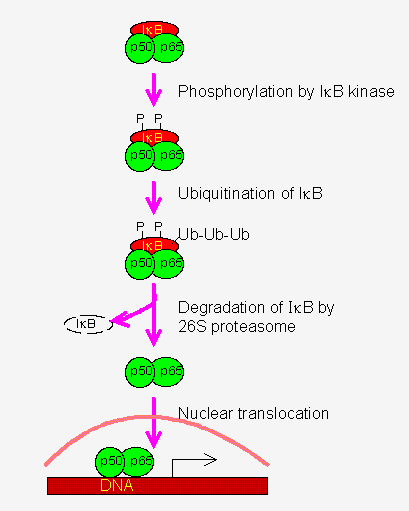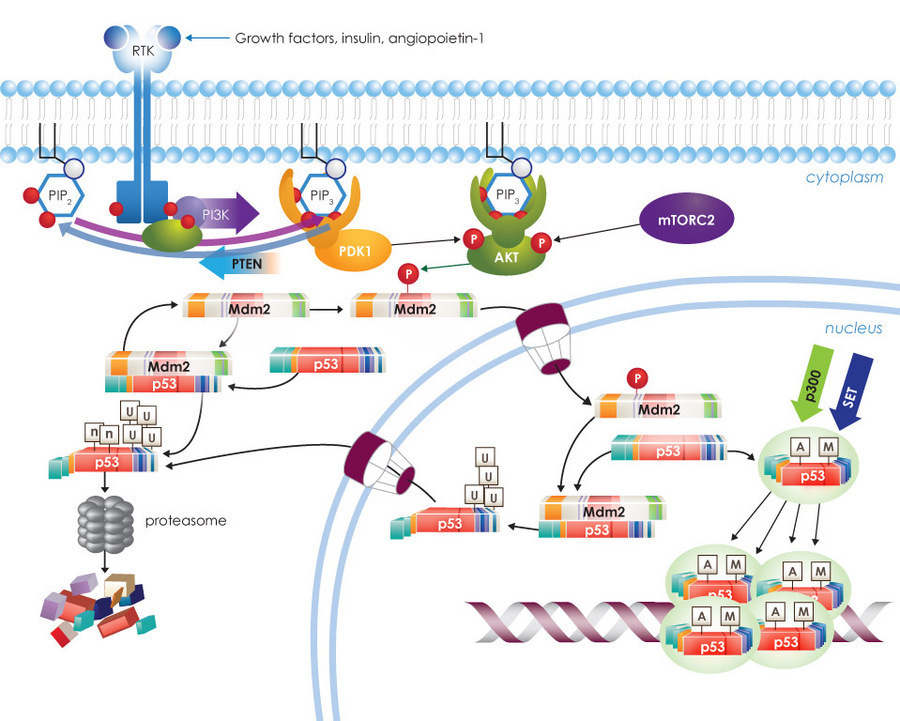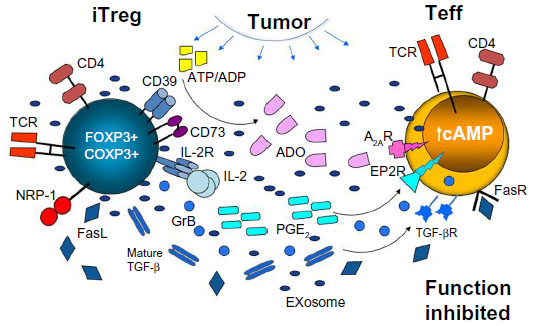Ubiquitin specific protease 7 (USP7) is a deubiquitinase, an enzyme that removes ubiquitin a 76 amino acid protein that is added onto lysines in the target protein. Proteins that are mono, or poly (up to 10 residues), ubiquitinated are taken to the proteasome for destruction. The activity of proteasome inhibitors bortezomib and carfilzomib in multiple myeloma, is principally mediated by their action of blocking proteasomal destruction of ubiquitylated IkB (following its phosphorylation by IkB kinase, or IKK), which leads to neutralization of NFkB.

Figure 1. IB regulation of NFB and proteasomal degradation of IB. http://www.web-books.com/MoBio/Free/Ch4H3.htm
USPs, including USP7, act upstream of proteasome inhibitors. USP7 is also called HAUSP (herpes virus-associated ubiquitin-specific protease) – it deubiqutinates MDM2, an E3 ligase that monoubiquitaltes p53. USP7 also deubiquitinates FOXP3, a transcription factor that is required for the functional development of Treg cells. Treg cells mute the antigen-specific anti-cancer immune response.

Figure 2. The degradation of p53, driven by Mdm2, is promoted by growth factors acting through AKT. https://www.caymanchem.com/news/p53-big-time-protein-in-a-big-time-field

Figure 3. Treg inhibition of T-effector (CD8+ T-cells). Treg accumulating in the TME (activated iTreg) utilize various suppressive mechanisms to inhibit functions of Teff. Notes: These include consumption of the available IL-2, production of ADO and PGE2, release of inhibitory cytokines including TGF-β and IL-10, release of FasL and/or GrB, and upregulation of NRP-1 which interacts with its ligand semaphorin-4a on lymphocytes or dendritic cells, resulting in better survival of Treg and greater Treg-mediated suppression. iTreg also produce scores of exosomes, which carry all of the above-listed iTreg products as well as nucleic acids and deliver them to Teff, thus contributing additional inhibitory signals. The suppressive factors released by iTreg interact with the cognate receptors present on the Teff surface, which process and direct the negative signals to the respective molecular pathways. The final result is a partial or complete loss of effector functions in responder immune cells. Abbreviations: Treg, T regulatory cells; TME, tumor microenvironment; iTreg, inducible Treg; Teff, T effector cells; IL, interleukin; ADO, adenosine; TGF-β, transforming growth factor-beta; GrB, granzyme B; NRP-1, Neuropilin-1; ATP, adenosine-5′-triphosphate; ADP, adenosine diphosphate; TCR, T cell receptor; cAMP, cyclic adenosine monophosphate. https://www.dovepress.com/the-role-of-regulatory-t-cells-in-cancer-immunology-peer-reviewed-fulltext-article-ITT
Drugs that block the activity of USP7 could have significant activity in restoring p53 functioning to cancer cells and making cancers susceptible to immune attack. FLX Bio is developing a series of reversible, potent small molecule inhibitors of USP7 demonstrating activation of p53 and blocking of Treg-mediated suppression of CD8 T cells.
Clinical studies are to begin in 2019.
